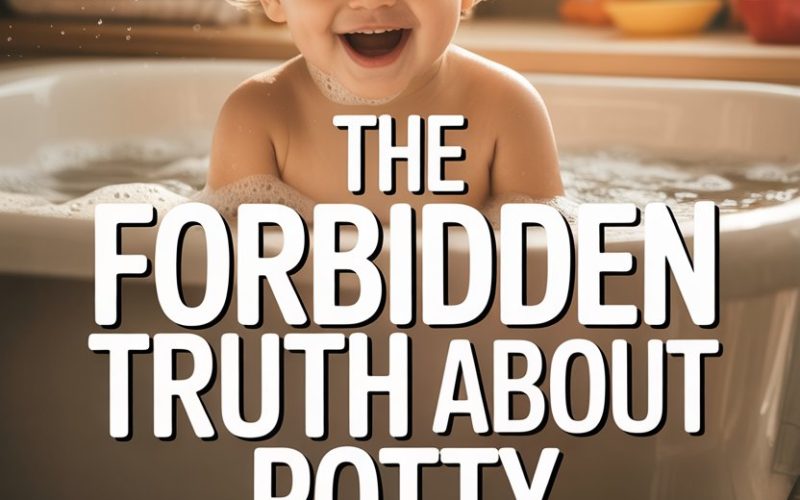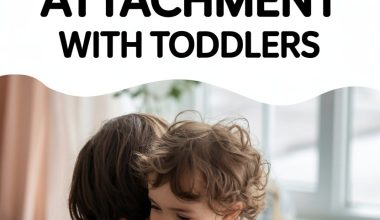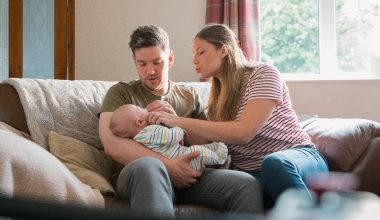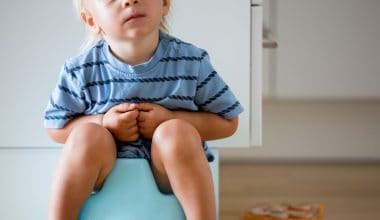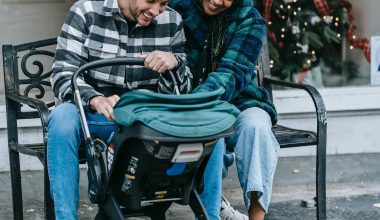Ah, potty training: a milestone so steeped in mystery and competitive parenting energy, it could have its own reality show.
Parents swap stories at playgrounds like secret agents comparing classified files. Is your toddler potty trained yet? How old were they? The only thing missing is a code name and a trench coat.
But what’s the real deal with potty training age?
There’s a forbidden truth, rarely whispered at mums’ groups or laid out in the smug parenting books. Whose timeline matters? Should you worry if your child seems to be on the “late show”?
Who Decided There Was a ‘Right Age’ Anyway?
Rumour has it that children in some countries are out of nappies before they can even pronounce “toilet.” Others seem to be in no rush at all, and their parents aren’t chaining themselves to milestone charts.
Americans famously love a schedule, but the “potty train by two” mantra didn’t float down from the heavens. In fact, cultural expectations play a massive role in the so-called right age.
If you’re feeling pressure from your neighbour, your mother-in-law, or Karen in the Facebook group, know that the age to start potty training is as much about social norms as it is about child readiness.
The American Academy of Pediatrics highlights that most children aren’t physically and emotionally ready until between 18 months and 3 years—sometimes later.
Yes, you read that wide window correctly. The “forbidden” bit? There is no magic number.
The Myth of the Precocious Potty Prodigy
You’ve heard the legend. “Little Johnny was out of nappies at 15 months. Never had an accident again!” Sure. And I can fly to the moon on a wet wipe.
Some children do show early interest. They might follow you into the loo and ask for updates (privacy, what’s that?).
But bladder control and the ability to interpret their own body signals don’t always arrive on the same timeline as curiosity.
Dr. Steve Hodges, a paediatric urologist, warns that too early toilet training can cause more harm than good—think constipation, holding accidents, and stress.
Rushing it because of what the neighbours say? Not necessary. Unless your child is applying for university next year, there’s still time.
Signs of Readiness (Spoiler: It’s Not Just Age)
While it’s tempting to whip out a calendar and circle their second birthday, readiness isn’t measured in months. Instead, look for clues more revealing than a nappy explosion at the supermarket.
Children may be ready when they:
- Stay dry for two hours or more.
- Can follow simple instructions (even if selectively).
- Put things where they belong (toys in the box, food up their nose, you know the drill).
- Show interest in grown-up bathroom habits.
- Can pull their own pants up and down (or at least make a valiant attempt).
Ticking most of these boxes is a better predictor than the number on the cake.
Why the ‘Potty Training Olympics’ Are a Lose-Lose Game
Potty training isn’t a competitive sport, though you’d never guess that from the way some parents treat it. Sticker charts, gold stars, and “potty parties”—it’s enough to make you wonder if you’ve missed the entry fee.
Pushing a reluctant child might lead to power struggles, increased anxiety, and, ironically, more resistance.
The Mayo Clinic points out that late toilet training is rarely a sign of developmental delay, but pressure and punishment can cause problems.
The forbidden truth: The only person keeping score is probably you. And maybe your mother-in-law. But you can always mute her.
What Early Toilet Training Gets (and Doesn’t Get) You
Early trainers get bragging rights, sure. But do they get a free pass to cleanliness forever? Not quite.
Research suggests that while some children do pick up the basics early, it doesn’t always stick. Regression is common, particularly during big changes (hello, new sibling, or the drama of starting preschool).
Kids trained “late” often catch up within weeks or months, and no one hands out medals for the youngest child in underpants at playgroup.
If you’re panicking because your friend’s toddler is nappy-free and yours is still gleefully filling theirs, take a breath. The endgame is the same: no more nappies, and a little less laundry.
Realistic Expectations (and How to Set Them)
Here’s where a heap of frustration can be saved. Potty training isn’t a linear process.
Some days, your child will pee on the potty with a flourish, sing a song, and request a biscuit. The next, they’ll flatly refuse and claim sitting on the toilet is for people with a death wish.
Regression is part of the process. Illness, life changes, or just plain toddler contrariness can send you back a step. That doesn’t mean you did it “wrong.”
Some kids take days, others months. Some will only use the potty for one function and act as if the other doesn’t exist. Hang in there.
Daytime and Nighttime Training: Not One and the Same
Here’s a secret not every book will spell out: mastering the potty by day doesn’t mean dry nights are near.
While you may be ready to toss out nappies the minute your child waltzes to the loo in daylight hours, nighttime dryness takes longer. Months, sometimes years longer.
The NHS notes that bedwetting is considered normal up to age five (and sometimes beyond). Night training depends on physical development, not determination.
No reward chart can speed up brain-bladder communication. If you’re changing sheets at 3am, welcome to the very exclusive club.
When to Seek Help
Every so often, potty training runs off the rails. Maybe your child is four-and-a-half and refusing to even look at the potty, or you’re noticing pain or fear.
Medical concerns like constipation or urinary tract infections can make training tricky, and sometimes children need professional support.
Don’t be shy about chatting to your GP or health visitor. There are resources, from ERIC, The Children’s Bowel & Bladder Charity in the UK to local paediatricians, that can help.
Every child’s path is different—and getting help when you need it is a sign of wisdom, not failure.
Potty Training Methods (Because One Size Doesn’t Fit All)
The shelves groan with “sure-fire” methods: three-day boot camps, gradual introductions, reward charts, those little toilets that sing. Each one has its fans and its horror stories. What works for one child may horrify another.
Some families swear by letting children run wild and nappy-free, mop in hand. Others prefer a more structured routine. You’ll find popular approaches like “Oh Crap!” by Jamie Glowacki and gentle Montessori-inspired methods.
If your child likes stickers, use them. If they’re more motivated by chocolate buttons, well, nobody’s judging.
Pick the bits that suit your family, your child’s personality, and your tolerance for bodily fluids on the carpet. Consistency helps, but flexibility is gold.
What About the Sibling Effect?
Older siblings have a special talent for “helping.” Sometimes, little ones copy big brothers or sisters and master the potty early. Other times, they dig in their heels, determined to carve their own path (or just enjoy the extra nappy changing attention).
If your older child was a breeze and you’re now wrangling a stubborn second, resist the urge to compare. Each child has their own timetable—and sense of drama.
Working Parents, Childcare, and Potty Politics
It’s a modern miracle anyone manages to potty train when both parents work or children are at nursery. Consistency is key, but so is patience with the different approaches your childcare providers might use.
Check in with your nursery or childminder. Many settings are happy to support your routine or suggest tweaks that work in a group environment.
Sharing your plan, sending spare clothes in bulk, and keeping lines of communication open can smooth the journey.
If you’re worried about a “potty training deadline” before preschool, relax. Most settings are used to a bit of nappy action, and children often pick up skills quickly in a new environment.
Potty Training in Public: Tales of Triumph (and Terror)
Venturing out with a half-trained child is not for the faint of heart. Public toilets are a sensory adventure, and the logistics rival a moon landing.
Carry spare pants, wipes, and a sense of humour. Portable potties or toilet seat adapters can help, but sometimes you just have to wing it. Accidents will happen.
Plan for an extra five minutes (or half an hour) when out and about, and lower your expectations. Everyone else in the park has been there, too—even if they pretend otherwise.
What They Don’t Tell You
No one puts this in the baby books: potty training is messy, unpredictable, and often hilarious in hindsight.
The forbidden truth is that children will get there—on their own schedule, no matter how many sticker charts, reward puffs, or pep talks you try.
You, dear parent, are doing great. Nappy-free days are ahead, even if it feels endless right now.
And when your child finally shouts, “I did it!” across a crowded restaurant bathroom, don’t be surprised if you shed a little proud tear (and then wash your hands. Twice).
Potty Training: The Endgame
Forget the competitive whispers and arbitrary milestones. The truth about potty training age is that there’s no universal deadline—just a window wide enough to fit every personality, bladder, and family schedule.
Trust your instincts, watch for signals, and grab the mop when needed.
Whether your child’s journey takes weeks or months, you’ll get there together—perhaps with a few more stories for the playground, and a lot more empathy for the next parent in line.
Now, where’d you put that spare pair of pants?
